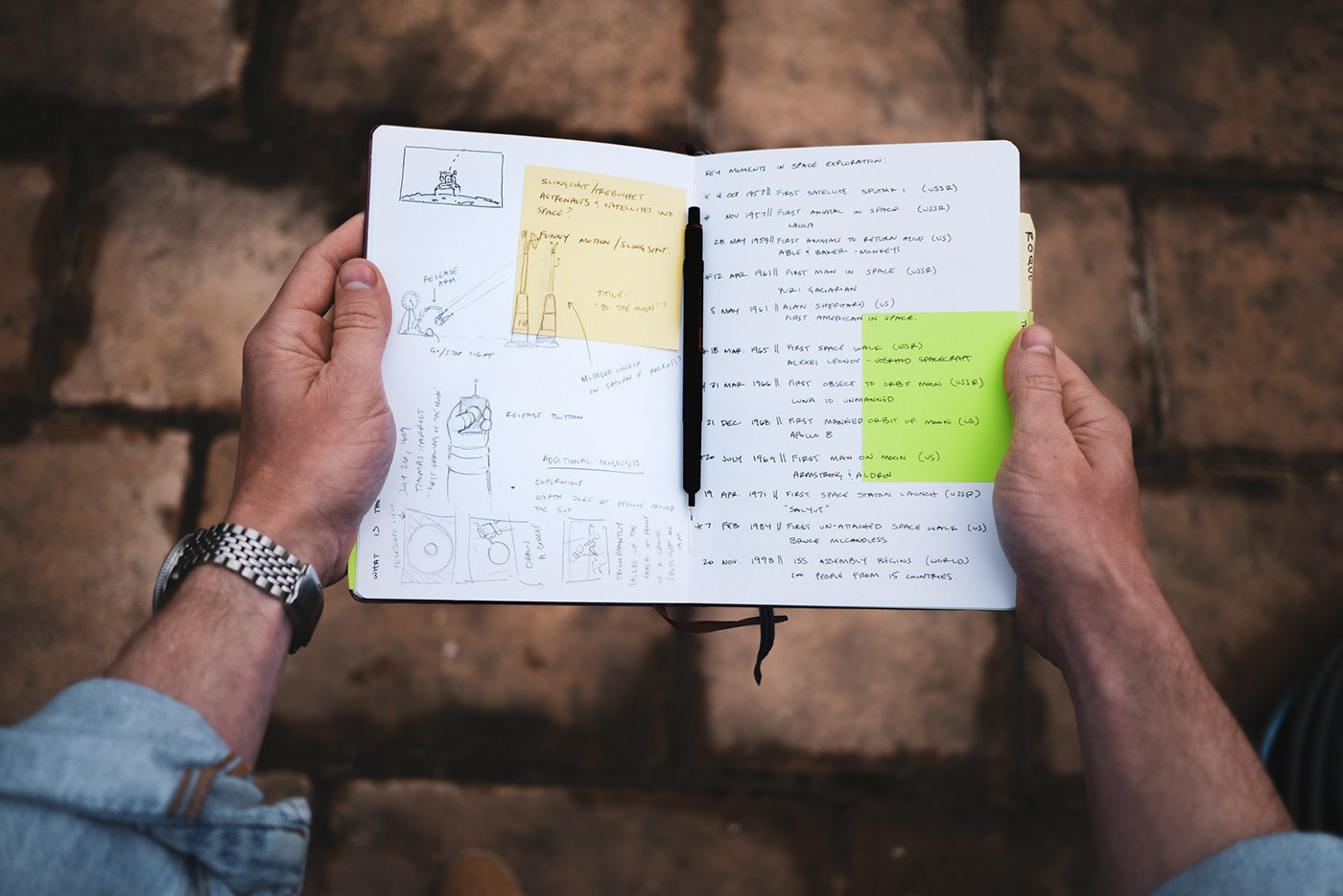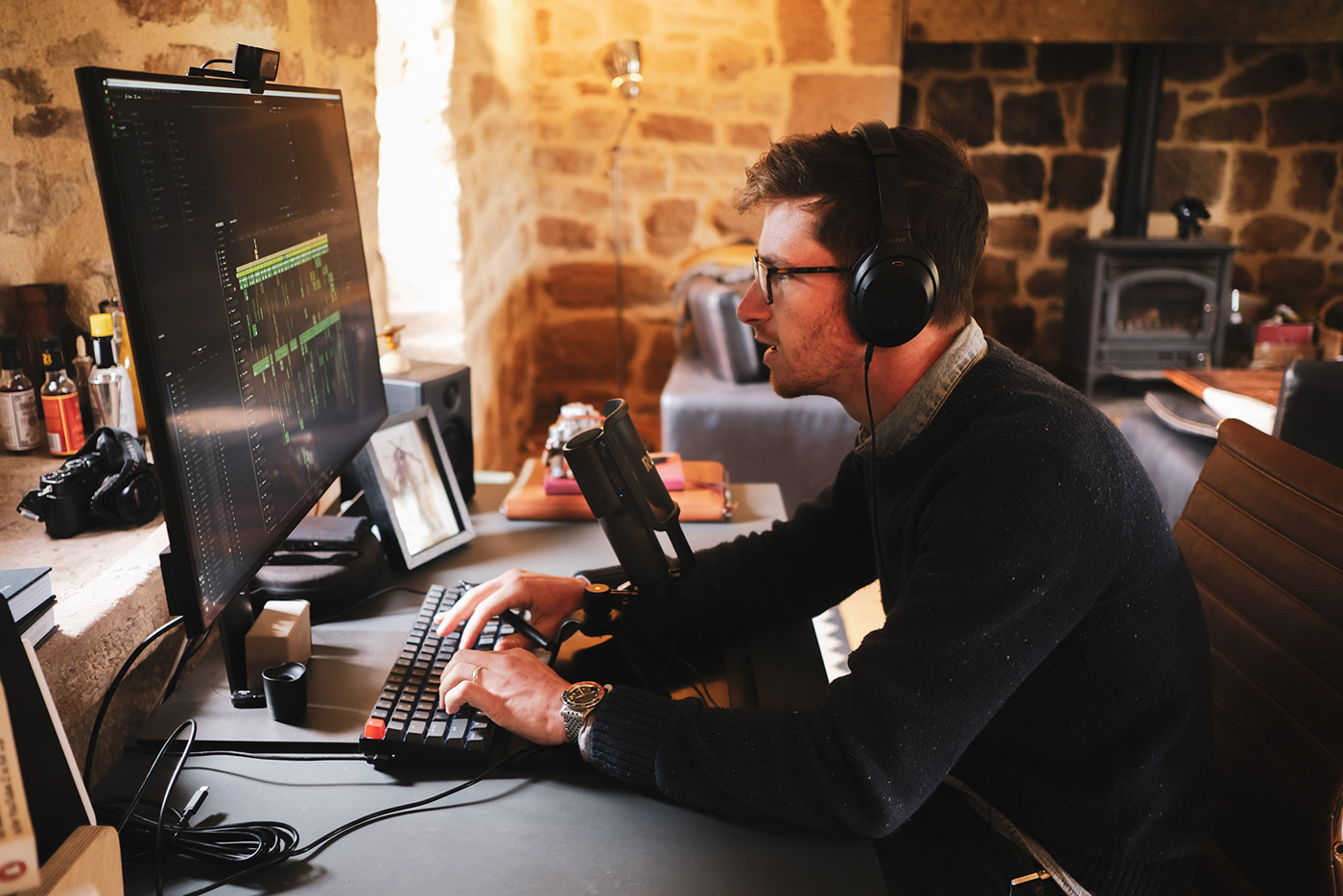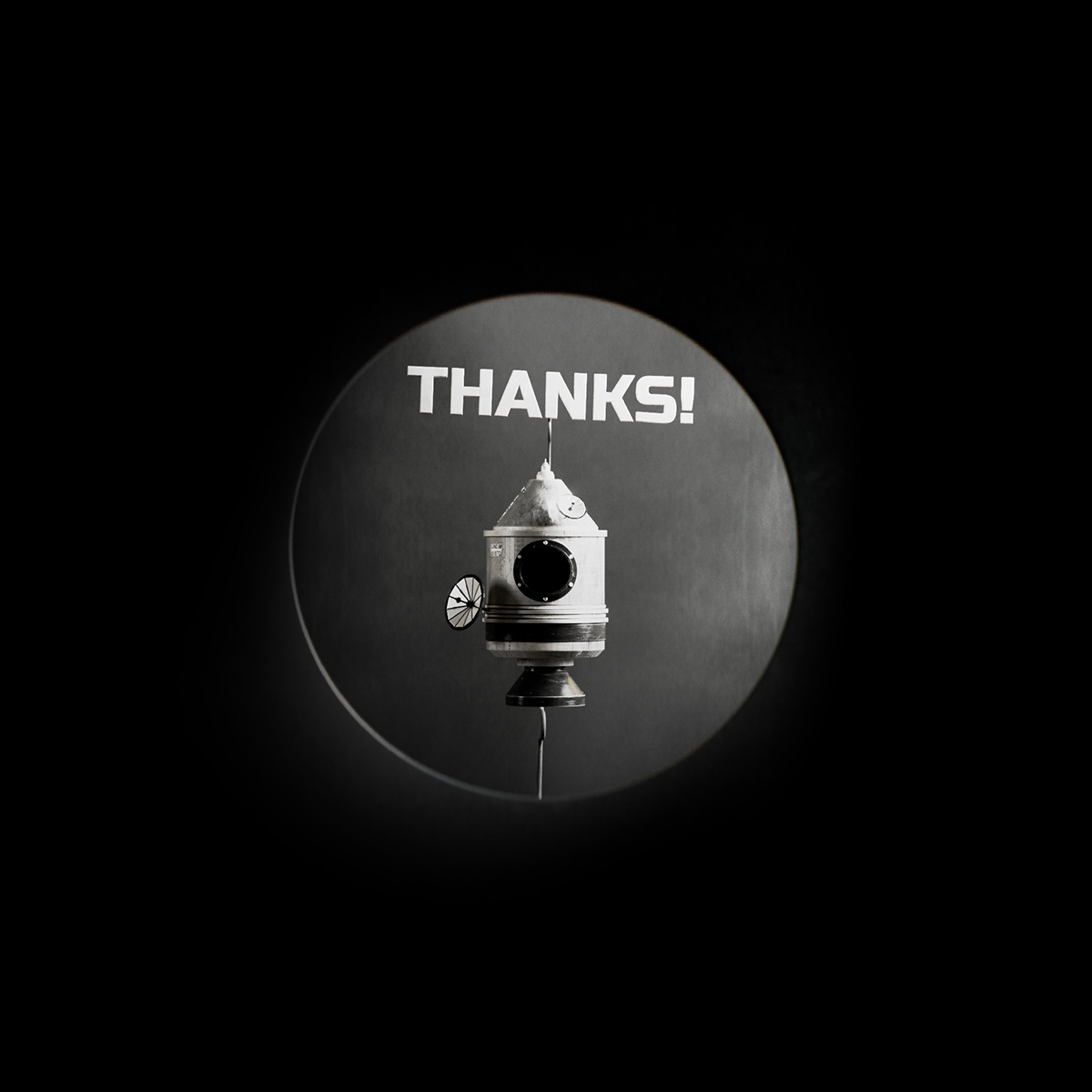
A short film recounting the events of the space race that took place between the USA and the USSR from 1955 until 1969. Having a long fascination with space myself, this period of history has always brought me a well of inspiration and excitement. In this piece, I took a lot of liberties on how the events took place, and this is by no means meant to be a historical tool. The first major liberty I took was ending this film after the landing of Apollo 11. The USA sent more missions to the moon, the USSR launched the Space Station program, David Scott drove on the moon, and eventually, the two countries launched joint missions that still continue today. Maybe the future will hold a sequel to this animation, but for now, please enjoy a my comedic retelling of the Ultimate Space Race.
For a long time, I have wanted to create a short film about space. It has actually been almost two years since I wrote the initial concept out - but things do change over time. In this specific case, it was all about finding the right story to carry a short film. What began as a short film about humanity's changing understanding of the moon over the centuries (with the space race as a small section) eventually changed to be a short only about the space race. There of course is plenty more I would have loved to focus on from the ancient Greek's early mathematical pondering about the distance and makeup of the moon. All the way to the fascinating beginnings of the International Space Station program, and my personal favorite, the Space Shuttle program. However, in order to keep a cohesive story line, I needed to focus on a shorter time period. And the years between 1955 and 1970 provided the perfect, action packed slate of events to base this piece on.
There are of course some visual liberties taken throughout the piece. The soviets had technology far beyond using a plunger release to launch their rockets, for one. Laika was launched inside of a spaceship, not outside of one. And although they may have fallen over a few times due to a radical adjustment in gravity, Neil and Buzz were not launched out of a giant slingshot face first into the moon.
The technological advancements and bravery shown by both nations during this time is truly something to look back on in wonder. But what I love to do as a director is to take the basic facts, and make them funny. Using the unexpected, the hidden, and the outright bizarre to bring joy to people who can hopefully learn something along the way. Now, I would like to show a little bit of the process that this particular piece went through. From a written script, loosely sketched out ideas, blocking animations, complex 3D VFX, and finally, a complete edit, I will talk about each step along the way in the next section.
There are of course some visual liberties taken throughout the piece. The soviets had technology far beyond using a plunger release to launch their rockets, for one. Laika was launched inside of a spaceship, not outside of one. And although they may have fallen over a few times due to a radical adjustment in gravity, Neil and Buzz were not launched out of a giant slingshot face first into the moon.
The technological advancements and bravery shown by both nations during this time is truly something to look back on in wonder. But what I love to do as a director is to take the basic facts, and make them funny. Using the unexpected, the hidden, and the outright bizarre to bring joy to people who can hopefully learn something along the way. Now, I would like to show a little bit of the process that this particular piece went through. From a written script, loosely sketched out ideas, blocking animations, complex 3D VFX, and finally, a complete edit, I will talk about each step along the way in the next section.


As with all animation projects, this one started with a single idea. I had been thinking about making a space themed short for a long time, and the idea came to me to have the astronauts launched into space by a giant slingshot held up by rockets, rather than inside of the rockets themselves. I ended up laughing to myself for a long time envisioning the astronauts being flung across the void of space. And so I decided to create a short film about the space race utilizing the unexpected and ridiculous wherever I could. The script for this film was one of the easier ones I have ever written - solely due to the fact that it was just recounting events that already happened. Once I had a finished script, I could push ahead with the storyboards.


I have talked about my own storyboarding process in other project breakdowns, but my personal philosophy here is just to get the idea across and move on. I am not a professional storyboard artist, and, unfortunately, the deeper I go into the technical aspects of 3D animation, I can feel bits of my traditional art skills slipping away. For each project I do, I have started adjusting and adapting the style of storyboard art I use. For this project, the thick lines and grey tones fit the 1950s soviet vibe I was going for - although at the time I had not made the decision to have the piece in black and white. I moved fast through this step, getting coarse ideas down onto paper (or iPad) and into edit, helping to spot the holes in the script, and the key moments I wanted to hit.


After I have a filled out edit with scratch VO and storyboards, I move onto a blocking pass. Usually, this would be a very coarse, wireframe playblast of each scene. However, due to this project not needing to hit check points with a client, I skipped ahead slightly in the process and went straight into a first animation pass. I did not do a final polish on any of the animation, but a 90% pass and a clay render helped to keep me motivated and feeling like I was moving ever closer to a finished product early in the process. I have often found that staying motivated through to the end of a personal project can be a challenge in itself, and feeling like I could see parts of the finished video early on was a big motivation for me. It also served another purpose I did not see at the time - solidifying the design direction. I had initially planned to do this piece in full color, however, after seeing the first pass at the edit with the grey clay shaders, it really clicked that keeping the piece in monotone would be a new challenge for me and set it in the period I was telling the story about.

Once the edit was filled out with the animation passes, it was on to the most tedious, but also one of the most fun parts of the process. Lighting and shading. Dressing the sets, adding realistic textures, and placing proper lighting takes a bland and flat scene into something believable with loads of character. This step was the first time in this project that I could see what the end product would look like. On all client projects, I usually do styleframes early on so I can know what functionality I need to build into the rigs and the models. But when there is no second person to give input, I like to keep a loose hold on things and see where they end up. In this case, it paid off well, and I am thrilled with the result. In this step, I also did all of the secondary effects work. Clothing simulations, procedural modelling systems, pyro simulations, and particle systems. I used Houdini FX to build out procedural models and do the heavy effects lifting.

This next step was a process I am equally as inexperienced in as I am unqualified. Doing the full voice over for the video. Like I mentioned above, this is the first short film I have done that is driven by a script read. Normally, I would leave this to the professionals, but without any real budget to make this, paying a professional voice actor to do a script read wasn't in the cards. So I brushed up on some American radio accents from the 50s, busted out a microphone, and hoped with everything I had that my good friend and music producer Jordan Ruiz could do something passable with the audio files I sent him.


Sound design has always been something that I enjoy, but tend not to take on as a paid job. I do have a background in music, but I lack the delicate ear it takes to squeeze sounds into the right frequencies to fit perfectly in a mix. But for this project, I wasn't concerned about any of that because this step of the process felt like celebration. The animation was completed, renders finished, timeline populated - this was the home stretch. It was also my last chance to fit in as many ridiculous moments as I could into the video. From yelling across the room to use for Neil flying through the void of space to learning to curse in Russian, crafting the sound for this project was a real treat. It was also my first time using Fairlight as the audio editor and Resolve as the video editor.
This project represents my biggest undertaking to date, and also the launch of what I hope to be many more projects along this line. Under a new studio name of Ambient Press, I will be working hard with other collaborators to bring more ideas to life, and new stories into the world. Feel free to check out the Behance page for Ambient Press, or find us online at [ambient.press]
Thank you for taking the time to view this project. I have included a selection of stills from the video below.





































